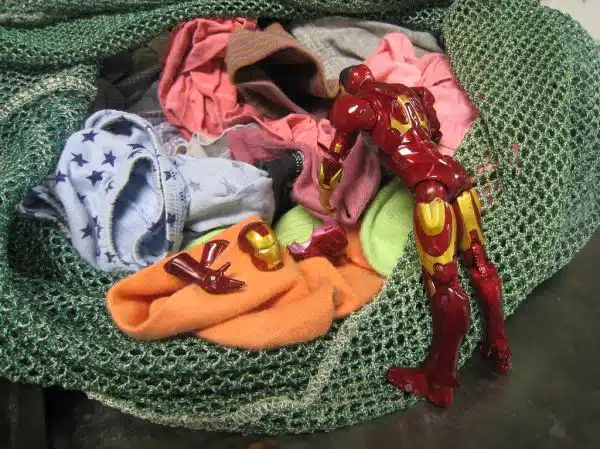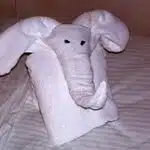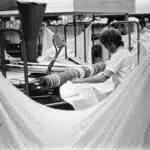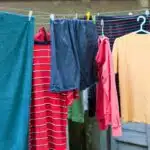Laundry sorting is an essential part of the laundry process that requires careful attention and detailed knowledge. Knowing how to sort the laundry properly can help you achieve optimal cleaning results, prevent damage to your clothes, and extend their lifespan. As a laundry sorting expert, I have developed a comprehensive guide on how to sort the laundry efficiently and effectively.
Sorting the laundry involves separating clothes based on their color, fabric type, and washing instructions. Proper sorting ensures that clothes are washed at the right temperature and with suitable detergents, preventing any potential damage or staining. By following a few simple rules when sorting the laundry, you can streamline your laundry routine while ensuring that your clothes remain in pristine condition. In this article, we will explore some practical tips for sorting your laundry like a pro and achieving exceptional results every time.
Importance Of Laundry Sorting
Laundry sorting is an essential step in the laundry process that many people overlook. Sorting clothes before washing them has numerous benefits that can extend the lifespan of your clothes and help you maintain their quality. One of the primary benefits of pre-sorting your laundry is that it prevents color bleeding, which occurs when colors from one garment transfer onto another during washing.
Sorting also helps to prevent damage to delicate fabrics and preserves the texture and quality of your clothes. For instance, washing a woolen sweater together with jeans may cause the sweater’s fibers to become entangled with lint from the jeans, leading to pilling or damage. However, separating them into different loads can prevent this from happening and help keep your clothes looking new for longer.
In summary, sorting laundry is crucial for maintaining the quality and longevity of your clothes. By preventing color bleeding and damage caused by different fabrics rubbing against each other, you can ensure that your garments stay vibrant and durable for years to come. In the next section, we’ll discuss how to separate clothes by color effectively.
Separating Clothes By Color
Light colors should be sorted into separate piles from dark colors in order to ensure safe laundering instructions are followed. This can be done by visually inspecting each item and placing light-colored items in one pile and dark-colored items in another. Additionally, items with a mix of light and dark colors should be placed in the dark-colored pile to avoid any color-bleeding issues. Lastly, sorting by fabric type is also recommended to ensure the best laundering results.
Light Colors
When it comes to separating clothes by color, one subtopic that often requires attention is light colors. Sorting by size and material thickness are important factors to consider but sorting by color is equally important. Light colored clothing can easily pick up dye from darker clothing during the wash cycle, so it’s essential to separate them properly.
Sorting light colored clothing based on size is a crucial step in the laundry sorting process. Smaller items such as socks and underwear tend to get lost in larger items like sheets or towels. To avoid losing these smaller items, it’s best to keep them separated from the larger ones. This will also help prevent any damage caused by rubbing against heavier fabrics during the wash cycle.
Material thickness is another factor that needs consideration when sorting light colored laundry. Thin materials such as cotton t-shirts should be kept separate from thicker materials like denim jeans or towels. The friction caused between different material thicknesses can cause pilling or tearing of the fabric. Therefore, keeping these items separated will help preserve their quality and longevity.
In conclusion, sorting light colored laundry based on size and material thickness is essential for maintaining the quality of your clothes. As a laundry sorting expert, it’s crucial to educate individuals about proper laundry care techniques to ensure their clothes last longer and look better after each wash cycle. By incorporating these tips into your daily routine, you can easily sort your laundry without any hassle!
Dark Colors
As a laundry sorting expert, it’s crucial to educate individuals about proper techniques for separating clothes by color. Sorting by color is essential as it can help prevent light colored clothes from picking up dye from darker clothing during the wash cycle. When it comes to dark colors, there are specific factors to consider when sorting them.
One important factor to consider when sorting dark colored clothes is the use of fabric softener. While fabric softeners can make clothes feel softer and smell better, they can also cause discoloration on dark fabrics over time. Therefore, it’s best to avoid using fabric softener on dark colored clothes or use a fabric softener specifically formulated for dark fabrics.
Proper storage of dark colored clothes is also essential in maintaining their quality and longevity. Storing them in a cool, dry place away from direct sunlight can help prevent fading or discoloration over time. It’s also best to keep these items separate from light colored clothing during storage and washing. By following these simple tips, you can ensure that your dark colored clothes last longer and maintain their rich color over time.
Separating Clothes By Fabric Type
After separating clothes by color and fabric type, the next step is to sort them by size. This is important because different sizes may require different washing cycles and temperatures. For example, larger garments may need more space in the washing machine to move around freely and prevent damage.
Another way to sort laundry is by frequency of use. Clothes that are worn more often tend to get dirtier faster and may require a more thorough cleaning. By separating them from less frequently worn items, you can ensure that they receive the right amount of attention in the wash. Additionally, this method can help extend the life of your clothes by preventing unnecessary wear and tear.
In summary, sorting laundry by size and frequency of use can lead to better cleaning results and prolong the lifespan of your clothes. By taking these extra steps in your laundry routine, you can ensure that each item receives the care it deserves. In the following section, we will discuss another crucial aspect of sorting: separating clothes by washing instructions.
Separating Clothes By Washing Instructions
When it comes to sorting clothes for laundry, separating them by washing instructions is crucial. One way to do this is by sorting clothes by size. Smaller items such as baby clothes and delicate undergarments should be separated from larger items like bath towels and bed sheets. This is because larger items can damage smaller ones during the washing process.
Another way to sort clothes is by their frequency of wear. Clothes that are worn more often tend to accumulate more dirt and sweat, making them dirtier than those worn less frequently. Separating these items can help ensure they are washed properly and thoroughly. Additionally, it can also make it easier to locate specific items when it comes time to fold and put away clean laundry.
To further separate clothes by washing instructions, consider creating three separate piles: whites, darks, and bright colors. This ensures that white clothing doesn’t become dingy from darker colors bleeding onto them during the wash cycle. Sorting bright colors separately can also help prevent fading over time.
Next up in our laundry sorting guide is separating delicate items from regular clothing to prevent damage during the wash cycle.
Sorting Delicate Items
- Hand-washing delicate items requires a gentle detergent and cool water to prevent shrinkage and discoloration.
- Agitation should be kept to a minimum when hand-washing, and items should be rinsed thoroughly before being laid out to dry.
- Delicate items can be dried using a tumble dryer on a low setting; however, line drying is preferable in order to preserve the item’s shape and fabric integrity.
- To ensure safe drying, delicate items should never be left in the dryer after the cycle is finished and should be removed immediately to prevent residual heat damage.
Hand-Washing
Hand-washing delicate items can be a daunting task, but it is necessary to maintain the quality of your clothes. The benefits of hand-washing outweigh any inconvenience it may cause. Hand-washing is a gentle technique that prolongs the lifespan of delicate fabrics. Unlike machine-washing, hand-washing prevents harsh friction and damage caused by the agitator.
To correctly hand-wash your delicates, follow these techniques: First, fill a sink or basin with lukewarm water and add a mild detergent specifically designed for delicate fabrics. Next, submerge the item completely and gently swish it around in the soapy water. Do not scrub or twist the fabric as this can cause damage. Rinse the item thoroughly with cool water until all soap suds are gone. Lastly, lay the item flat on a towel and roll it up to remove excess water before air-drying.
In conclusion, taking care of your delicates by hand-washing them will not only preserve their quality but also save you money in the long run by avoiding costly replacements or repairs. By following these simple techniques, you can ensure that your clothes remain in good condition for years to come. Remember to always read and follow label instructions for specific care instructions on each garment.
Drying Techniques
When it comes to sorting delicate items, hand-washing is not the only crucial aspect. Proper drying techniques are just as important in maintaining the quality and longevity of your clothes. The two main options for drying delicates are air-drying and machine drying. While machine drying may seem more convenient, it can lead to shrinkage, damage, and roughening of delicate fabrics due to high heat and tumbling. On the other hand, air-drying is a gentler option that allows clothes to dry naturally without exposing them to excess heat or movement.
Air-drying is a preferred method for many people because of its benefits. Not only does it prevent the risk of shrinkage and damage caused by machine drying, but it also saves energy and money on electricity bills. Additionally, air-drying helps avoid static cling by allowing natural air circulation around the fabric fibers. When hanging delicates to air-dry, it’s essential to do so carefully without stretching or pulling them out of shape.
Another way to enhance the benefits of air-drying is by using fabric softener. Fabric softeners not only make clothes softer and fluffier but also reduce wrinkles and eliminate static cling effectively. They provide a layer of protection against wear and tear while improving the overall appearance of your delicate items. When using fabric softener, follow label instructions carefully to avoid overusing or underusing it on different fabrics.
In summary, proper drying techniques play a significant role in preserving the quality of delicate items after washing them by hand. Air-drying is an excellent option that saves energy and prevents damage caused by machine drying. Incorporating fabric softeners into your laundry routine will further improve the care you give your clothes while enhancing their appearance and feel. Remember always to read label instructions before attempting any procedure on each garment type as they may vary from one piece to another.
Sorting Heavily Soiled Clothing
As a laundry sorting expert, effective stain removal is a top priority. When dealing with heavily soiled clothing, it is important to pre-treat the stains before washing. This can be done by using a stain remover or soaking the garment in a mixture of water and detergent for a few hours.
One key factor in effectively removing stains from heavily soiled clothing is to identify the type of stain and treat it accordingly. For example, grease stains require a different treatment than grass stains. It is important to read the care label on the garment and follow any specific instructions for stain removal.
Another important consideration when sorting heavily soiled clothing is to separate whites from colors. Whites should be washed separately and may require additional bleach or whitening agents to remove tough stains. By taking these steps, you can ensure that your heavily soiled clothing comes out clean and fresh after every wash.
To take care of your laundry needs, it’s not just about sorting clothes but also treating them correctly. In order to sort towels and linens effectively, it’s important to look at their fabric content, colorfastness, weight, and thickness. These factors will determine how they should be laundered – whether on high heat or low heat settings – as well as which detergents or fabric softeners are best suited for their care.
Sorting Towels And Linens
- Towels can be differentiated by features such as size, absorbency, and material type.
- Linens generally consist of bed linens, table linens, and kitchen linens.
- It is important to separate laundry by color in order to preserve the original color of the fabric and to prevent any color fading or bleeding.
- Generally, white laundry can be washed with other white items, while colored items should be sorted with similar colors.
- Before washing, any heavily soiled laundry should be pre-treated with a stain remover for best results.
- Additionally, towels and linens should be washed separately from clothing, as the laundering settings may differ.
Types Of Towels
When it comes to sorting towels, it’s important to consider the different types of materials and usages. For instance, bath towels are typically made of cotton or a cotton blend and are used for drying off after a shower or bath. Hand towels, on the other hand, can be made of a variety of materials such as linen or microfiber and are used for drying hands in the bathroom or kitchen.
Knowing how to properly fold different types of towels is also important in maintaining their quality and longevity. Bath towels should be folded in thirds lengthwise and then in half horizontally, while hand towels can be folded into thirds either vertically or horizontally depending on personal preference. Proper folding not only helps with organization but also prevents wrinkles and creases that can damage the fabric over time.
Overall, understanding the various types of towels and how to properly sort them is essential for creating an efficient laundry routine. Whether you’re a busy parent trying to keep up with your family’s needs or simply someone who takes pride in keeping a clean home, taking the time to learn these basic principles will make all the difference in achieving your goals.
Types Of Linens
When it comes to sorting laundry, towels are just one piece of the puzzle. Another important aspect to consider is the different types of linens that may need to be washed and sorted. Common types of linens include bed sheets, pillowcases, tablecloths, and napkins. Each type requires specific care in terms of washing and folding.
Different types of laundry detergents can also impact how linens should be sorted and washed. For instance, some detergents may be better suited for delicate fabrics while others may be more effective at removing tough stains. Speaking of stains, common laundry stains such as coffee, wine, and grass can all leave their mark on linens if not properly treated. Knowing how to remove these stains can help preserve the quality and appearance of linens for years to come.
Properly sorting linens goes beyond just separating them by type. It’s also important to consider factors such as color and fabric type when doing so. For example, white linens should always be washed separately from colored linens in order to prevent any bleeding or discoloration. Additionally, lightweight fabrics such as linen or silk should be washed separately from heavier fabrics like cotton or polyester to prevent damage during the wash cycle. By taking these extra precautions when sorting linens, you’ll not only extend their lifespan but also ensure that they look their best every time they’re used.
Colors Of Laundry
Sorting towels and linens may seem like a simple task, but it actually involves several important considerations. One of these is the color of the laundry. Sorting laundry by color is essential to prevent any dye bleeding or discoloration during washing. Generally, darks should be separated from lights, and bright colors should be washed separately to prevent them from fading or staining other items. This is especially important for linens that are used for decorative purposes, such as tablecloths or napkins.
Aside from color, sorting laundry by material is also crucial. Cotton and synthetic fabrics should be washed separately since they have different wash requirements. Cotton can withstand hot water and higher dryer temperatures, while synthetic fabrics require cooler temperatures to avoid shrinking or melting. Sorting linens by material can also help prevent damage during washing and ensure that they last longer.
Properly sorting laundry not only helps preserve the quality and appearance of linens but also ensures that they are cleaned effectively. By separating laundry by color and material, you can prevent any unwanted damage or stains on your linens. As a laundry sorting expert, I recommend taking the time to sort your towels and linens properly before washing them in order to achieve the best results possible.
Sorting Undergarments
Undergarments are a critical part of our daily attire. They come in various materials, colors, and sizes, making them a bit tricky to sort. Sorting undergarments is an essential step towards achieving an organized closet. When sorting your laundry, you should begin by sorting out your undergarments.
Organizing drawers is one of the easiest ways to keep your undergarments sorted. You can use drawer dividers or tackle boxes to separate them according to size or color. This technique will save you time when looking for specific items and make it easy for you to identify which ones need washing.
After organizing the drawers, the next step is learning different folding techniques for your undergarments. For instance, bras should be folded in half with each cup nested inside one another while panties should be folded in thirds and then in half. Learning these techniques will not only keep your undergarments neat but also save on space.
- Use color-coded hangers to differentiate between clean and dirty clothes
- Keep socks clipped together using safety pins
- Separate delicates from other clothing items
- Use fabric softener sheets when storing clean clothes to prevent static cling
- Designate a specific spot for dirty clothes
Next up: sorting baby clothes without compromising their quality during laundering.
Sorting Baby Clothes
After sorting your undergarments, it is time to move on to the next step of laundry sorting: organizing baby clothes. As a laundry expert, I highly recommend using color coded hampers to make laundry day more efficient. Assign each hamper a specific color for different types of baby clothes such as onesies, sleepers, and outfits. This will not only save you time but also make it easier for others in your household to help with laundry.
Once you have your color coded hampers ready, start by organizing baby clothes by size. Sort them into piles of newborn, 0-3 months, 3-6 months, 6-9 months and so on. It is important to keep the sizes separate as babies grow quickly and you don’t want to accidentally put a too-small outfit in the wash with larger sizes. This will also make it easier when it comes time to pack away outgrown clothes or pass them down to younger siblings.
After sorting by size, begin sorting baby clothes by type. Onesies should be separated from sleepers and outfits should be sorted separately as well. This will ensure that they are washed correctly according to their fabric type and care instructions. Once everything is sorted by size and type, it’s time to start washing! Remember to use gentle detergent that is free from any harsh chemicals that could irritate sensitive baby skin.
As we move on from sorting baby clothes, let’s focus on another category of clothing: workout clothes. While workout clothes may seem straightforward enough, there are a few key tips for making sure they stay in top condition after every wash cycle.
Sorting Workout Clothes
Imagine you just finished a strenuous workout at the gym, and your clothes are drenched in sweat. Proper workout attire is essential to get the most out of your exercise routine. It allows you to move freely and prevents injuries, but it also keeps you comfortable during your workout. So, how do you sort your workout clothes properly?
Firstly, separate your workout clothes from other laundry items before sorting them by color and fabric type. This will prevent any dye transfer or damage to the fabric. The benefits of exercise are numerous, but wearing proper workout attire can help improve circulation, regulate body temperature, and prevent skin irritation.
Secondly, consider using a laundry bag or mesh washing machine bag for delicates such as sports bras and compression shorts. This will help protect the delicate fabrics from damage during the wash cycle. Additionally, avoid using fabric softener on athletic wear as it can clog up moisture-wicking fibers in the fabric.
Properly sorting workout clothes helps prolong their lifespan while ensuring that they stay clean and fresh for future workouts. In the next section, we will discuss how to sort shoes and accessories for optimal organization in your laundry routine.
Sorting Shoes And Accessories
Organizing Accessories
When it comes to sorting laundry, shoes and accessories are often overlooked but must not be neglected. Before starting, ensure that the shoes are dry and clean to avoid any damage to other clothes. Begin by separating them into two categories: indoor and outdoor shoes. Indoor shoes include slippers, sandals, and loafers while outdoor shoes include sneakers, boots, and heels.
Sorting Shoes by Type
After separating the shoes into indoor and outdoor categories, further separate them based on their type. For instance, place the sneakers together in a pile before placing the boots in another pile. This ensures that similar items are washed together, reducing the likelihood of damage or discoloration from mixing different types of footwear.
Once all the shoes have been sorted by their type, move on to organizing accessories like belts and hats. Place them in a separate pile before washing them with like items based on color and fabric type. By organizing accessories in this manner before washing them, you can prevent any damage or color bleeding that might occur during cleaning.
Transition:
Now that we have sorted out our shoes and accessories let’s move on to another important aspect of laundry – sorting pet bedding and toys.
Sorting Pet Bedding And Toys
After sorting shoes and accessories, it’s time to focus on the laundry. The process of sorting laundry can be a daunting task, but with proper organization and knowledge, it can be an efficient and stress-free experience. Before starting the laundry sorting process, it’s important to gather all the dirty clothes from various locations in your home.
Once you have gathered all the clothes, sort them by color and fabric. Separating clothes by color prevents dyes from bleeding onto other fabrics during washing. Sorting by fabric ensures that delicate items are not damaged during the wash cycle. It’s also important to check for stains and treat them before washing. This will ensure that stains do not set into the fabric.
Washing pet bedding and cleaning pet toys is also an essential part of laundry sorting for pet owners. Pet bedding should be washed once a week or more often if necessary to prevent odors and bacteria buildup. Use warm water and mild detergent to wash pet bedding thoroughly. Pet toys should also be cleaned regularly using warm water and mild soap to remove dirt, bacteria, and germs.
- Sort clothes by color and fabric
- Check for stains and treat them before washing
- Wash pet bedding once a week using warm water and mild detergent
- Clean pet toys regularly using warm water and mild soap
In summary, sorting laundry can seem like a tedious task but following these steps can make it more manageable. Separating clothes by color and fabric, checking for stains, washing pet bedding regularly, and cleaning pet toys are all important aspects of laundry sorting that will lead to clean, fresh-smelling clothing every time. Moving forward, let’s explore some tips for maximizing laundry sorting efficiency to save you time in your daily routine.
Tips For Maximizing Laundry Sorting Efficiency
Efficient laundry sorting is not only about separating whites from colors, but also maximizing space and time management. The first tip for maximizing laundry sorting efficiency is to sort clothes by fabric type. Grouping fabrics with similar washing instructions can help prevent damage and save time in the long run. Another useful tip is to sort clothes by level of dirtiness or stain intensity. This will allow you to adjust the wash cycle accordingly and avoid wasting water and energy.
To further maximize space when sorting laundry, consider using a designated laundry station with separate bins or bags for each category. This will not only make it easier to sort, but also keep your laundry area organized and clutter-free. Additionally, investing in hangers or folding racks can help optimize space when air-drying clothes.
Time management is also crucial when it comes to efficient laundry sorting. A useful technique is to start sorting before the washer finishes its cycle so that you have a continuous flow of clean loads ready for washing. Planning ahead by scheduling specific times for laundry throughout the week can also help prevent procrastination and last-minute rushes.
| Fabric Type | Stain Intensity | Color | Dry Cleaning |
|---|---|---|---|
| Cotton | Light | White/Light Colors | No |
| Polyester | Medium | Dark Colors/Patterns | No |
| Silk/Wool | Heavy/Difficult Stains | Black/Reds/Bright Colors | Yes |
In summary, maximizing laundry sorting efficiency involves grouping clothes by fabric type, level of dirtiness/stain intensity, optimizing space through designated bins/racks, and prioritizing time management through pre-planning and continuous flow of clean loads. By implementing these tips, you can reduce the amount of time spent on laundry while still achieving optimal results.
Transitioning into common laundry sorting mistakes to avoid: While there are many tips for efficient laundry sorting, it’s important to also be aware of common mistakes that can hinder the process.
Common Laundry Sorting Mistakes To Avoid
While sorting laundry might seem like a trivial task, it can make a significant difference in the effectiveness of your laundry routine. However, many people make common mistakes when sorting their laundry, which can lead to inefficient washing and even damage to clothing items. It is crucial to avoid these mistakes and learn efficient sorting techniques for a successful laundry experience.
One common mistake people make when sorting laundry is failing to read the care labels on each garment. These labels provide essential information about the proper washing temperature, drying method, and any other special instructions that must be followed. Ignoring these guidelines can cause irreversible damage to an item and shorten its lifespan significantly. Therefore, before throwing your clothes into the washer, ensure that you know how to treat each piece according to its specific care requirements.
Another mistake that people often make when sorting laundry is combining different fabrics or colors in one load. This error can result in discoloration of lighter garments or transfer of dye from darker ones onto lighter items. To avoid this, sort your clothes into piles based on color and fabric type before starting your wash cycle. This way, you can ensure that each load contains only similar items, reducing the risk of any unwanted color transfers.
To conclude, mastering laundry sorting like a pro requires avoiding mistakes such as ignoring care labels and mixing different fabrics or colors in one load. Instead, use efficient sorting techniques such as reading care labels thoroughly and separating clothes by color and fabric type before washing them. By following these tips consistently, you will prolong the lifespan of your clothing items while ensuring they come out looking clean and fresh every time you do your laundry.
Conclusion: Mastering Laundry Sorting Like A Pro
Mastering laundry sorting is a crucial skill for anyone who wants to keep their clothes clean and organized. However, it can be overwhelming to sort through piles of laundry, especially if you have a large family or a busy schedule. With the right techniques and strategies, you can become a pro at laundry sorting in no time.
One important aspect of laundry sorting is mastering laundry folding. By folding your clothes correctly, you can maximize storage space in your closet or dresser and prevent wrinkles from forming. To fold t-shirts, lay them flat on a surface with the front facing down. Fold the bottom up so that the hem meets the collar, then fold the sleeves inward towards the center. Finally, fold the shirt in half so that the sleeves meet in the middle.
Another tip for organizing your laundry space is to designate specific areas for different types of clothing. For example, you might have one hamper for whites and another for darks. You could also separate out towels and sheets into their own bins or baskets. By keeping everything separated from the start, you’ll save time when it comes to sorting through your laundry later on.
In conclusion, mastering laundry sorting requires some effort and attention to detail. However, by following these tips for organizing your space and perfecting your folding skills, you’ll be able to tackle even the largest loads of laundry with ease. Remember to stay patient and consistent in your efforts – before long, you’ll be a pro at keeping your clothes clean and organized!
Conclusion
Laundry sorting is an essential task that can make or break the quality of your clothing. To master this skill like a pro, it’s crucial to separate clothes by color, fabric type, and washing instructions. This process will prevent colors from bleeding onto other garments and ensure that delicate items receive the gentle care they need.
Sorting pet bedding and toys separately can also prevent unwanted pet hair from sticking to other fabrics in the wash. Maximizing laundry sorting efficiency requires planning ahead and being vigilant about separating clothes before laundering them.
Avoiding common laundry sorting mistakes such as mixing colors, throwing everything in together, or neglecting to read washing instructions can result in ruined clothes and wasted time. By implementing these tips and tricks for expert laundry sorting techniques, you’ll be able to keep your clothes looking their best for longer. So don’t hesitate – sort your laundry today!
Image Credits
- “Tony Sorts Laundry” by ShellyS (featured)
















![How To Wash And Care For White Clothes 16 The only genuine borax soap cleanses hygienically saves the clothes and hands. 20 Mule-Team brand Boraxo white laundry soap [front]](https://green-life.blog/wp-content/uploads/2023/05/YDXLLCovnOjq-150x150.jpg.webp)












